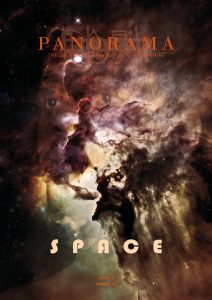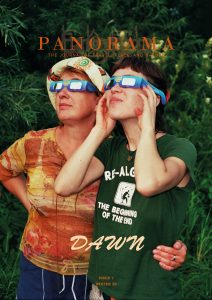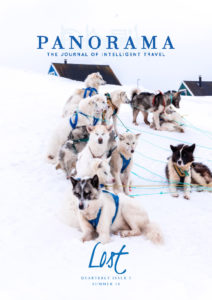Homecoming
It was raining hard that night and the howls of stray dogs echoed across the village. What I remember from those scenes come as passing memories and some tattered threads of thought that I have to stitch up somewhere in my mind. I remember hugging Mama’s legs tightly while watching her in a shouting match with the landlord of our rented house. Tears poured down our cheeks as the heavy raindrops continued falling on our doorstep. It was only then that I realized that we were all crying—Mama and me outside, and my younger brother Michael inside our house. I was three years old and my brother was one. I knew we were being evicted that night, and I felt very powerless. The memory is as clear as water. It all happened at Ipil Street in Cembo, Makati.
My father left us long before that unforgettable evening. He went back to his first family and wife. Mama, who was in a live-in relationship with him, didn’t know that my father was a married man then. It all led us to this moment. Because Mama couldn’t pay the rent, we were forced to leave. That night, she decided to go home to the province. We left at once and brought with us the hope to see the light of another day.
The next morning, we were at the house of Tatay and Nanay, my mother’s parents.
This place is called Quinabuangan. Even today, I don’t know where its name came from or what it means. Sitio Quinabuangan, Poblacion, Candelaria, Zambales is its long official name. Because it had the word ‘poblacion’ in its name, it was a part of the town. Most days, I called it a district-town.
Quinabuangan is not within the geographic boundary of the pueblo. Most towns in this province look similar—arranged within a circle, the municipal hall, the church, the market and the schools facing each other. In the middle of the circle is the plaza where you’ll find small or big grassy parks where a tall statue of Dr Jose Rizal stood. It is surrounded by large Spanish ancestral houses on the sides of these streets—some of these houses were later remodelled to a modern design—which are owned by people belonging to noble classes or affluent families of the hacienderos and professionals.
If you walk along the cemented road from the plaza, about 500 metres to the left, you’ll find Quinabuangan. Different structures facing each other surround it. There are lots of mango,
tamarind, and other fruit-bearing trees along the way. As you enter inside, you will see to the right a farmland divided in the middle by Zambales’ national highway. To the left is a river that flows to other barrios of Candelaria. Beyond is the town’s cemetery. In the middle are the townsfolk’s households where not more than a hundred people live. Most of the people here make a living in Quinabuangan by farming, fishing, cultivating trees, and selling tamarind and mangoes.
A year later, after we left the city, Mama decided to go back to Manila and look for a job. It was time for me to start studying in school. She was lucky because she was immediately hired by a sewing factory near Mandaluyong City. She left us temporarily in the care of our grandparents.
I felt the heaviness of the situation even though I was still young back then. Every time my mother left us in the middle of the night, me and my brother would cry in agony sitting at the
windows of our house. Later on, Mama found a way to sneak out of the house while we were still asleep. She didn’t know that it hurt me so much even if I did not cry when I woke up. I’d
run as fast outside our front yard and stare at the street corner of Quinabuangan where I’d see the main road and wait for the Victory Liners to pass by, imagining that they would probably
bring my mother home. I always prayed for my mother to change her mind in the middle of the ride and return to us so we’d be together again. That she would stay a few more days with us.
Even if we didn’t eat. Even if I didn’t go to school. Just the three of us together. Even without a father. Yet her sudden returnnever happened. That’s when the tears would start rolling down
my cheeks and I would mope under the shade of our guava tree. Sometimes, I’d go back to sleep beside Michael, caress his hair, and accept that it would be the two of us left in this place again.
We were not well-off like the other families in Quinabuangan. That’s why Michael and I had an assigned chore in our grandparent’s house. We’d get water, cook rice, pick up pieces of firewood for cooking, and buy food from the market. We’d join our cousins and uncles to go fishing, or we’d do some crabbing by the river using our feet. Uncle Jun and Uncle Genie would sometimes do the mangingilaw, which is what they referred to as catching tons of fish and crabs in the evening at Quinabuangan. They would wake us up in the wee hours of the morning to boast of their catch and sometimes we would dress the wounds they got. If there was no catch at all, we’d eat monamon—anchovies called dilis in Manila, stewed in mangoes and bagoóng. It is also made as a kilawin, served as a dish in drinking sprees. Sometimes we would eat small fishes called terong. Some believe them to be yellow tail fusilier fish because of their similar red underside and shape. Like the monamon, the terong was also stewed in mangoes and bagoóng.
For most of my life in elementary school, I stayed in Candelaria. I remember being the shortest kid in class, always in front of the line during the flag ceremony. I was often ordered by the taller kids to get the ball if it was thrown beyond the fence—because these larger kids couldn’t pass through the holes—and often I was bullied by those larger than me. Sometimes I’d be the sidekick of a bigger classmate who had a big enemy too. That big enemy would also have a sidekick.











